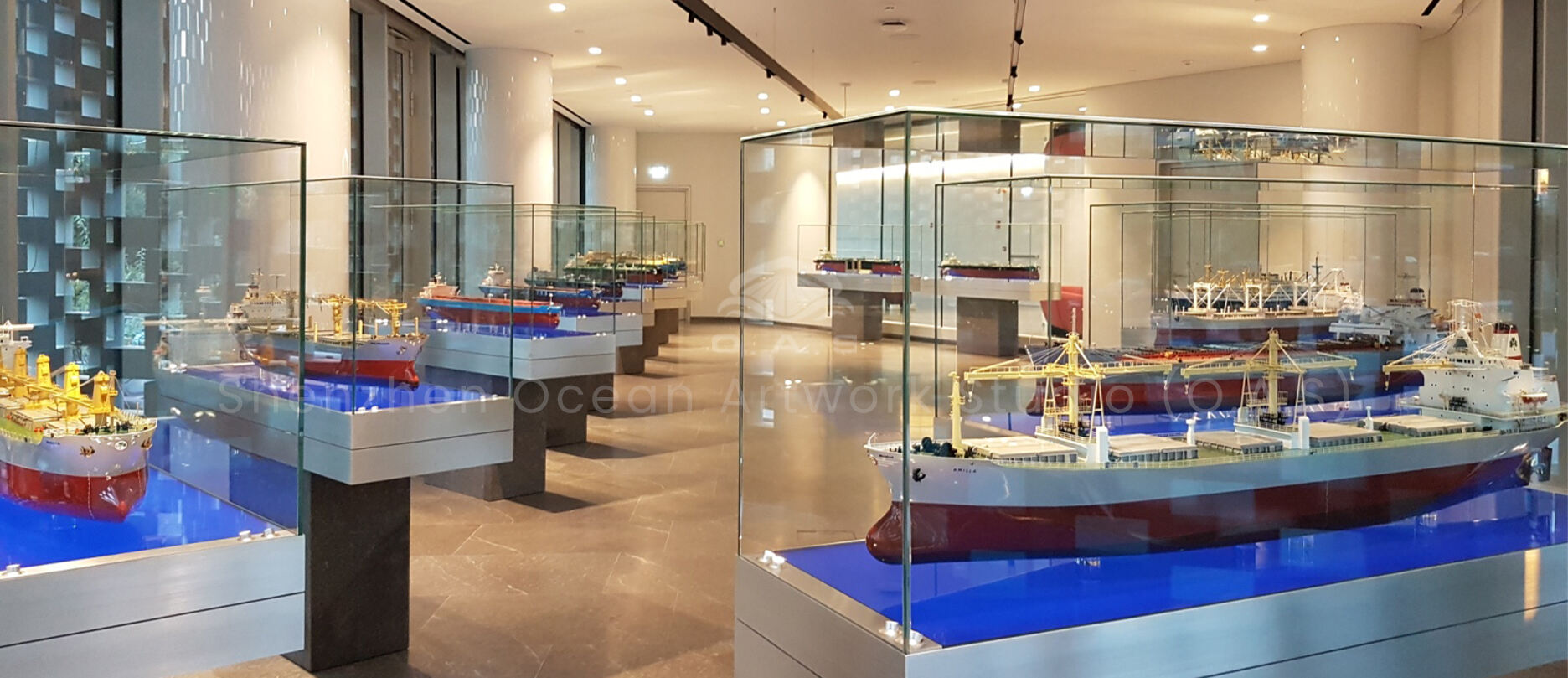עולם הדגמים הימיים בקנה מידה מייצג שילוב מרתק של אומנות, דיוק הנדסי ודقة היסטורית. כשמדובר בדגמי אוניות מטענים בתפזורת, חובבי וקולקטורים מחפשים חפצים אשר משקפים הן את העצמות והן את הסיבוכיות הטכנולוגית של כלי שייט אלה. דגם אוניה של מטענים בתפזורת באיכות גבוהה הוא יותר מאשר רק חפץ תצוגה – זהו עד לעדכני התעשייה הימית ולפרטים המורכבים שהופכים את האוניות הענקיות האלה לתפקודיות.
יצירת מודל ספינת משא אוטנטית דגם ספינה דורשת תשומת לב מדויקת לפרטים ובהבנת עקרונות ההנדסה הימית. מהעקומה הספציפית של הקטום עד למיקום המדויק של ציוד הסיפון, כל אלמנט חייב לעבוד יחד כדי ליצור ייצוג עקבי ומדויק. מודלים אלו הופכים לעיתים קרובות לכלי חינוך בעלי ערך, לפריטי אספנות ולנקודות מוקד מרשים במוזיאונים ימיים או בתצוגות עסקיות.
בסיסו של כל מודל יוצא דופן של ספינת משא מתחיל בקטום. מודלים פרימיום כוללים קטומים שעשויים מחומרים איכותיים כגון סיבי זכוכית, רזין או עץ, בהתאם לסקאלה ולשימוש המיועד. קווי הקטום צריכים להציג באופן מדויק את עיצוב הספינה המקורית, עם תשומת לב מתאימה לצורת המצוף, תצורת האחרונה והפרופורציות הכוללות האופייניות לספינות משא.
גימור פני השטח הוא קריטי למראה המודל. מודל אוניה ענקית באיכות גבוהה יתאפיין בציפוי צבע חלק ועקבי, ללא ליקויים או kếtexturas לא אחידות. קו המים צריך להיות חד ומותאם, בעוד פרטלי הליכס צריכים להציג תיאום קנה מידה נכון ומיקום מדויק. חיפויים עמידים למזג אוויר מבטיחים שהמודל ישמר את מראהו לאורך זמן, במיוחד עבור חפצים לתצוגה הנחשפים לתנאי סביבה משתנים.
ייצוג אותנטי של מכונות סיפון מבדיל דגמים פרימיום מהעתקים בסיסיים. דגמי ספינות מטען בתפזורת באיכות גבוהה כוללים ציוד טיפול במטענים בקנה מידה מדויק, כולל מנופים מפורטים, כננות ומערכות מסועים. המיקום והפונקציונליות של אלמנטים אלה צריכים לשקף את מקביליהם בעולם האמיתי, ולהדגים את הבנתו של יצרן המודלים את פעולות המטען.
תשומת לב לרכיבים הקטנים ביותר, כגון חריצים, עמודי אבוקה ומסגרות בטיחות, מגבירה את האותנטיות הכוללת של המודל. יש להגדיר את התקני החיזוק בפרופורציות מתאימות ולהבריג אותם בצורה בטוחה, עם ריווח ומיקום מדויקים שמשקפים את תקני העיצוב של ספינות אמיתיות. כלול תכונות פעילות, כאשר זה רלוונטי, מוסיף ממד אינטראקטיבי שמגביר את הערך החינוכי והצגתי של המודל.

המבנה העליון של מודל ספינת משא חייב להיות בקנה מידה מדויק ועם תשומת לב לפרטים הארכיטקטיים. מודלים איכותיים מציגים מבנה גשר, אזורי מגורים ומערכות אוורור בפרופורציות נכונות. חלונות, דלתות ונقודות גישה צריכות להיות מוגדרות בבירור וממוקמות נכון, בהתאם לתכנון התפעולי של ספינות אמיתיות.
דרגות חיצוניות, שבילים ומאפייני בטיחות חייבים להיות מיוצגים ברמת פירוט וה backpage מתאימות. אינטגרציה של ציוד תקשורת, אורות ניווט ורכיבים טכניים אחרים צריכה להפגין מחקר מעמיק והבנה של דרישות כלי שיט מודרניים.
דגמי אוניות מטען בתפזורת מעולות כוללים לעתים קרובות פרטים גלויים על תא המטען המציגים את הפונקציה העיקרית של כלי השיט. תצורת תא המטען צריכה לייצג במדויק את קיבולת המטען של האונייה ואת עיצוב הטעינה, עם מכסי פתחים ונקודות גישה בקנה מידה מתאים. חלק מדגמי הפרימיום אף כוללים חלקים פנימיים גלויים חלקית המדגימים את הסידור המבני של כלי השיט.
הכללת מערכות תמיכה מתאימות, כולל מכלי בולוסט וחיזוקים מבניים, תורמת לדיוק הטכני של המודל. איברים אלו, אף על פי שהם לפעמים מוסתרים מהעין, תורמים לערך החינוכי ולאמינות של ההצגה.
גימור מבדיל בין דגמי ספינות משא ענק איכותיים. יש להשתמש בחומרי צביעה מקצועיים עם התאמת צבע נכונה לספינות המקור, לרבות אפקטים של התדרדרות מצב הספינה כאשר זה מתאים. סימוני הקיטור, כולל סימוני שקיעה, קווי טעינה ומספרי זיהוי של הספינה, חייבים להיות מדויקים ובהיקף נכון.
לוגואים של חברות, נמל רישוי ותכונות זיהוי אחרות חייבות להיות משוחזרות באופן נאמן עם ביצוע חד וברור. האיכות של פרטים אלו משפיעה בצורה משמעותית על אותנטיות הדגם והאסתטיקה החזותית שלו, מה שהופך אותם לאלמנטים חשובים של הצגה מתקדמת.
דגם ספינת מטענים בנפח גדול באיכות גבוהה צריך להימסר עם תיעוד מקיף שכולל את مواصفات הספינה, יחס ההקטנה וההקשר ההיסטורי. תיעוד זה מוסיף ערך לאוספים ומשפר את התועלת החינוכית של הדגם. אישורים לאוטנטיות, כאשר קיימים, מספקים מידע חשוב על מקורו ומאמתים את איכות הביצוע של הדגם.
שרטוטים טכניים וחומרי התייחסות המצורפים לדגם מדגימים את מחויבות היצרן לדיוק ולשימור היסטורי. מסמכים אלו עוזרים לצופים להבין את המשמעות של רכיבי העיצוב השונים והתפקיד של הספינה במסחר maritim.
הקנה המידה האידיאלי תלוי במרחב התצוגה המיועד וברמת הפרט הרצויה. קני מידה נפוצים נעים בין 1:50 למודלים גדולים ומפורטים של מוזיאונים ועד 1:400 לתקליטים קטנים של אספנים. קנה מידה של 1:100 או 1:200 לרוב מספק איזון מצוין בין גודל לייצוג פרט.
תחזוקה שגרתית כוללת הסרת אבק בעדינות בעזרת מברשות רכות, הגנה מפני אור שמש ישיר ושינויים קיצוניים בטמפרטורה, וביקורת תקופתית של חלקים מחוברים. מומלץ להשתמש בארונות תצוגה עם הגנה מפני קרינת UV לדגמים יקרים כדי למנוע התדרדרות ולשמור על המראה שלהם.
דגמי ספינות מכולות איכותיים לרוב כוללים חומרים כגון עצי דחק ימיים, רזינות איכותיות, חלקים מתכתיים מעוטרי צילום (Photo-etched) ותקעים מנחושת. השימוש בחומרים אלו, בשילוב עם דבקים וסיומות ברמה מקצועית, מבטיח עמידות ומראה אותנטי לאורך זמן.
 חדשות חמות
חדשות חמות2024-06-11
2024-06-07
2024-06-01
2024-06-01
2024-06-01
2024-05-25